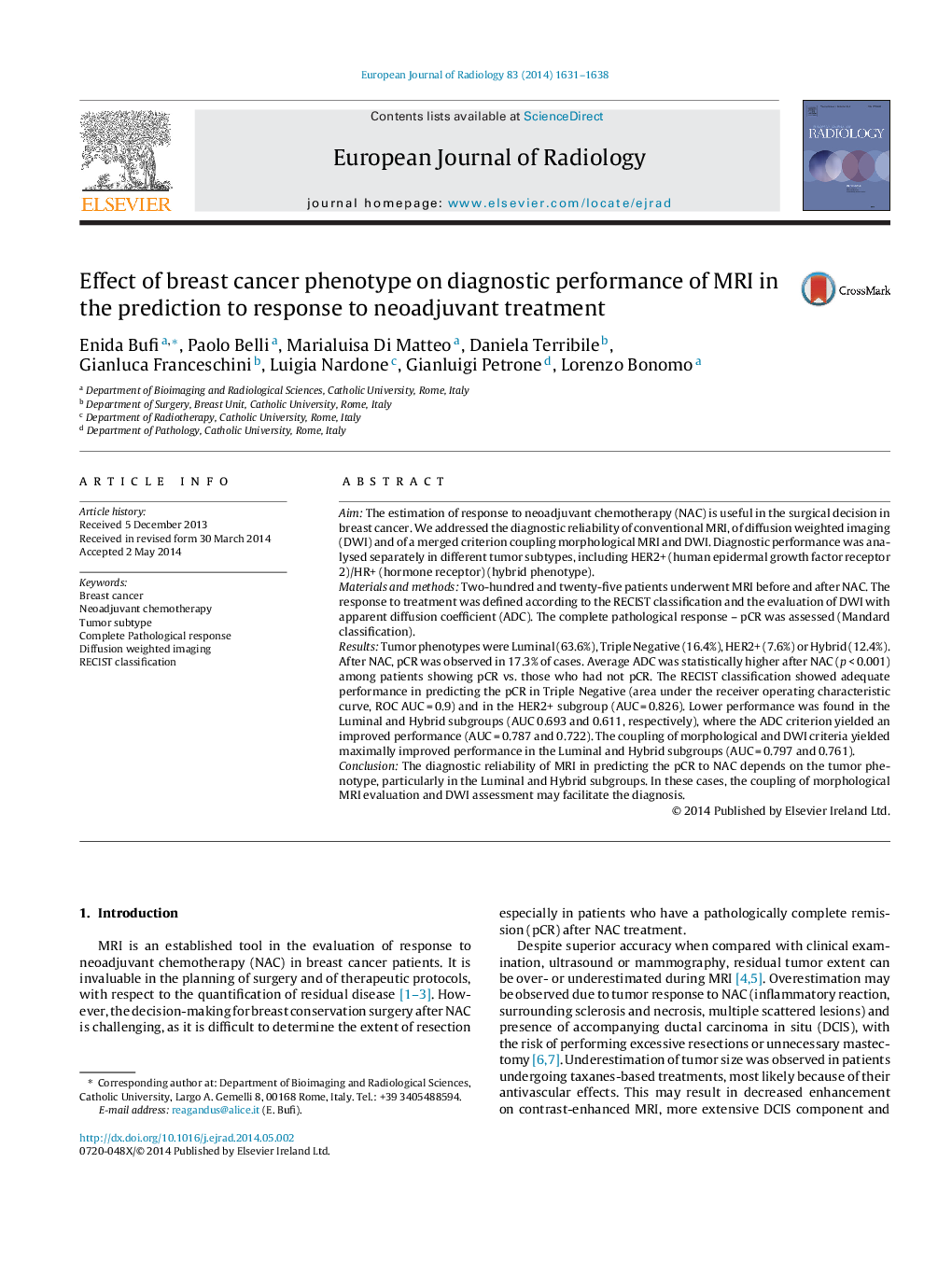| کد مقاله | کد نشریه | سال انتشار | مقاله انگلیسی | نسخه تمام متن |
|---|---|---|---|---|
| 4225457 | 1609762 | 2014 | 8 صفحه PDF | دانلود رایگان |

AimThe estimation of response to neoadjuvant chemotherapy (NAC) is useful in the surgical decision in breast cancer. We addressed the diagnostic reliability of conventional MRI, of diffusion weighted imaging (DWI) and of a merged criterion coupling morphological MRI and DWI. Diagnostic performance was analysed separately in different tumor subtypes, including HER2+ (human epidermal growth factor receptor 2)/HR+ (hormone receptor) (hybrid phenotype).Materials and methodsTwo-hundred and twenty-five patients underwent MRI before and after NAC. The response to treatment was defined according to the RECIST classification and the evaluation of DWI with apparent diffusion coefficient (ADC). The complete pathological response – pCR was assessed (Mandard classification).ResultsTumor phenotypes were Luminal (63.6%), Triple Negative (16.4%), HER2+ (7.6%) or Hybrid (12.4%). After NAC, pCR was observed in 17.3% of cases. Average ADC was statistically higher after NAC (p < 0.001) among patients showing pCR vs. those who had not pCR. The RECIST classification showed adequate performance in predicting the pCR in Triple Negative (area under the receiver operating characteristic curve, ROC AUC = 0.9) and in the HER2+ subgroup (AUC = 0.826). Lower performance was found in the Luminal and Hybrid subgroups (AUC 0.693 and 0.611, respectively), where the ADC criterion yielded an improved performance (AUC = 0.787 and 0.722). The coupling of morphological and DWI criteria yielded maximally improved performance in the Luminal and Hybrid subgroups (AUC = 0.797 and 0.761).ConclusionThe diagnostic reliability of MRI in predicting the pCR to NAC depends on the tumor phenotype, particularly in the Luminal and Hybrid subgroups. In these cases, the coupling of morphological MRI evaluation and DWI assessment may facilitate the diagnosis.
Journal: European Journal of Radiology - Volume 83, Issue 9, September 2014, Pages 1631–1638